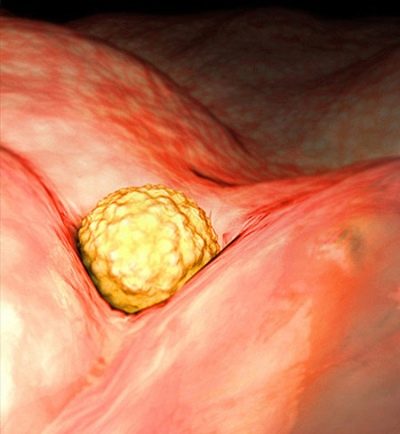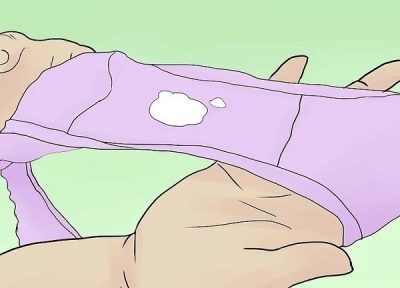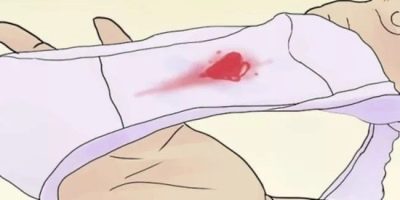What are the discharge during the implantation of the embryo?
Women who are planning to become mothers, with particular trepidation, are waiting for an answer to the question whether they managed to become pregnant in the current menstrual cycle. Particular excitement accompanies the second half of the cycle - the time after ovulation, when the main question is whether the implantation took place, whether it was successful. Many special hopes are pinned on the change in the nature of the discharge during implantation of the embryo. In this article we will talk about whether you should wait for any unusual discharge when the embryo is attached to the wall of the uterus and what they usually are.
How is the attachment?
The attachment of the ovum, which occurs approximately 7-9 days after ovulation, if conception took place, the process is complicated and surprising. At the cellular level, in a woman's body, so many unusual things happen that it is difficult to imagine. To understand why and how the discharge changes after the implantation of the ovum into the uterine wall, you need to try to imagine the whole process.
After the fusion of the egg with the sperm cell, the oocyte becomes a zygote with its own full set of chromosomes. Within 5 days after ovulation, the fertilized egg moves through the fallopian tube into the uterine cavity. Then, for about a day, she can be in free “swimming” until she sticks to the wall of the uterus. The sticking stage is called adhesion.
The outer layer of the ovum releases long, thin fibers, which begin to produce an enzyme that dissolves endometrial cells. The cells are destroyed, a depression is formed in the endometrial layer, in which the egg is completely immersed. This stage of attachment is called invasion. Completely the process of implantation of the embryo in the uterus lasts about 40 hours.
From this moment on, pregnancy begins to develop. The fetus is fed by combining the chorionic villi with the tissues of the uterus with nutrients and oxygen from my mother's blood. At the site of dissolution of endometrial cells and ingrowth, a placenta subsequently forms. From the first days after implantation, the production of the hormone hCG begins, which maintains progesterone at a consistently high level, which ensures that the embryo remains in a viable state.
Character detachable
Allocation changes under the action of hormones. Since progesterone rules the “ball, it is normal for the discharge to become more dense and scarce after implantation. In most cases, they are white with a slight yellowish tinge. But it is impossible to judge the occurrence of pregnancy by such secretions. Even if the implantation was unsuccessful, a high level of progesterone is characteristic of the second phase of the cycle, and therefore, in terms of discharge, the so-called “dry period” occurs anyway.
Much more revealing are the specific discharges that are not necessary, but sometimes they become the first more or less obvious sign of implantation - the so-called implant bleeding. It most often appears immediately after the end of the implantation stage of the invasion.Damaged endometrial cells and small blood vessels lead to an outflow of a small amount of blood released in the process.
In practice, a woman, about a week after ovulation, notices a drop of blood on her daily lining, a bloody “daub” of pinkish or brown color.
The color indicates the duration of the implantation - the earlier the blood is released, the brighter it will be, while the brown discharge may indicate that the attachment of the ovum took place more than a day ago.
Implantation bleeding is perceived by many as menstruation, which just started ahead of time. With thoughts of failure in the cycle, the woman is preparing to enter a new pregnancy planning cycle, but the discharge ends as suddenly as it appeared. The total volume of implantation bleeding does not exceed 2 ml. The bleeding ends on the same day or the next and no longer repeats.
Pink, cream, beige and orange discharge a week after ovulation is also considered implant.
One should not confuse them with green, gray and foul-smelling secretions, which do not speak about any implantation, but “loudly” signaling the presence of a bacterial infection.
Implantation bleeding is not well understood, so medicine cannot explain, for example, why some women have it and others do not have it with a completely successful implant. One thing is known - such bleeding does not represent the slightest danger to the health of the future mother and her baby, it does not affect the further course of pregnancy.
At the same woman in different pregnancies can be observed, and then there is no implant discharge. Therefore, this symptom can not be considered a mandatory sign of pregnancy.
Other sensations
Reliable signs of implantation medicine is not known, however, many women claim that they felt this exciting period. This is not excluded, experts say, because sensations may well be the reaction of the female body to the changed hormonal background.
In addition to the discharge, a woman may notice that she has become drowsy, and gets tired quickly. Often women complain of headaches, migraines, mild nausea and anorexia. There may be a slight pulling pain in the lower abdomen. The mood changes - the woman becomes more irritable, many note that they were seized with unreasonable anxiety and depression.
The breast becomes more sensitive, but it usually occurs after implantation after a few days. Tastes may also be affected. Women claim that a slight metallic taste appears in the mouth.
If the woman does not have any of the symptoms described, do not think that implantation has occurred. They, in terms of official medicine, and should not be. If something like this is manifested, then this is a “trick” of individual sensitivity.
It is quite difficult to deal with the symptoms, sensations and discharge during implantation in the IVF treatment cycle. Against the background of hormonal support, drugs that a woman took in the first phase of the cycle, and which she continues to take after embryo transfer, all the symptoms described above are often present, but they are only a side effect of hormonal drugs. To consider them signs of implantation is not entirely correct. The discharge after IVF may be bloody for 14 days, and this will also be quite normal amid hormonal stimulation and support.
Attachment or pathology?
Having discovered spotting on the pad a week after ovulation, a woman may think about the true causes of the discharge. If after a day the secretions did not become scanty and did not disappear, if they became stronger and look strange, have a bubbly consistency, contain blood clots, you should definitely visit a doctor.Uterine bleeding is a dangerous pathology that can be caused by a wide variety of causes. The specialist will help to understand them and prescribe timely treatment.
See the next video for more details on secretions during embryo implantation.



















